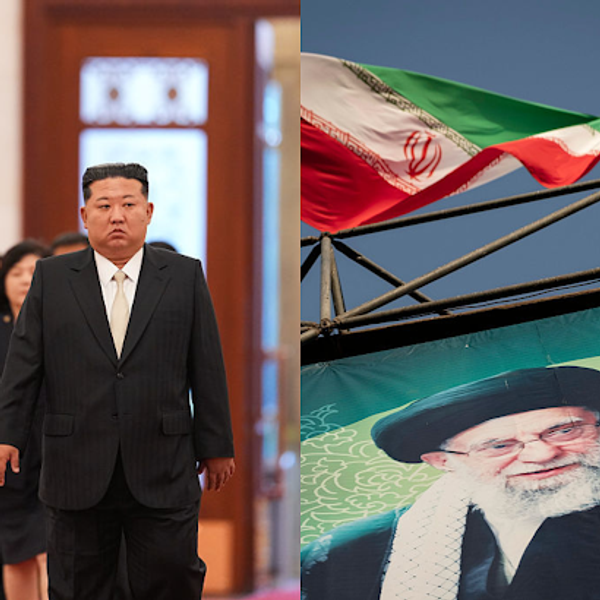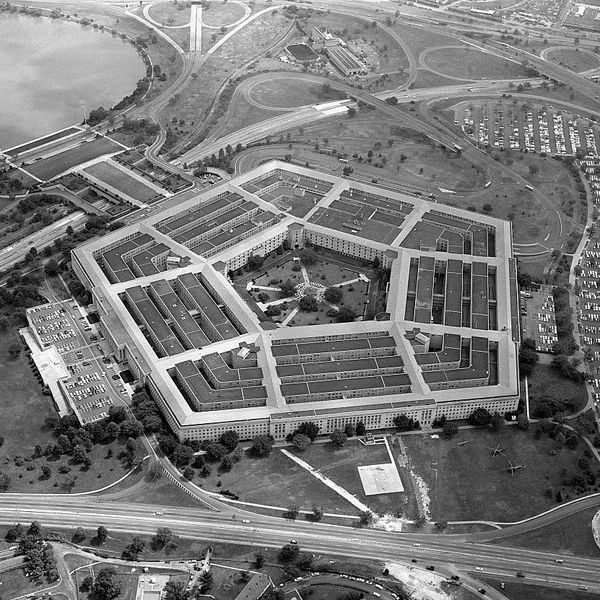OPINION — “America’s defense strategy and strategic posture must change in order to properly defend its vital interests and improve strategic stability with China and Russia. Decisions need to be made now in order for the nation to be prepared to address the threats from these two nuclear armed adversaries arising during the 2027-2035 timeframe. Moreover, these threats are such that the United States and its Allies and partners must be ready to deter and defeat both adversaries simultaneously.”
That’s a quote from America’s Strategic Posture, the 2023 final report of the Congressional Commission on the Strategic Posture of the United States.
I quote it here because the Senate Armed Services Committee, in its report on the fiscal 2025 National Defense Authorization Act (NDAA) that was released July 8, requires the Secretaries of Defense and Energy to assess the Commission’s final report and its 80 recommendations and report back to the congressional defense committees, not later than March 31, 2025.
In the policy area, the Committee directs “the Secretary of Defense and the Chairman of the Joint Chiefs of Staff to submit a strategy to the congressional defense committees that enables the United States to deter and defend against simultaneous aggression by two near-peer nuclear competitors.”
In addition, the Senate Committee recommended its own increases in U.S. nuclear weapons preparedness and new nuclear weapon production in its version of the fiscal 2025 NDAA that will be up for a vote on the Senate floor in coming days.
I will deal with policy and strategy below, but first I want to describe the increases in nuclear readiness and weaponry the committee wants to add to the already large U.S. nuclear force structure. They are staggering – and they are being driven by Congress rather than the White House or the Pentagon.
A committee's menu of nuclear spending
The Senate Armed Services wants the Air Force to make all strategic bombers capable for nuclear missions and prepare to put some on alert, as they were during the height of the Cold War.
The committee recommended restoring nuclear capability to some 30 B-52 bombers that had been previously modified to carry only conventional weapons. It provided $194.8 million to accomplish the job, and another $4.5 million to prioritize expanding the number of B-52 bombers with nuclear, long-range standoff capability.
The committee directed “the Secretary of the Air Force, in coordination with the Commander, U.S. Strategic Command, to provide a briefing to the congressional defense committees, not later than January 1, 2025, on the requirements for, and implications of, returning between 5 to 10 long-range heavy bombers to alert status in the event that such an action should become necessary to meet operational requirements.”
The Air Force is already modifying the B-52 bomber Combat Network Communications Technology (CONECT) display system, to ensure the nuclear mission display is integrated into mission planning and target assessments, eventually giving all B-52 crew members a common operations display.
The Senate Committee also wants a plan to prepare to upload nuclear warheads to the currently deployed force of 400 Minuteman III intercontinental ballistic missiles (ICBMs), and another plan for deploying up to 450 new Sentinel ICBMs in the future.
The request for the warhead upload plan was included in the fiscal 2024 NDAA, but to date it has not been supplied to the committee. This year, it’s been attached to language that would limit the Air Force Secretary’s travel funds until the plan is delivered.
The Committee is also pushing ahead with development of the nuclear sea-launched cruise missile (SLCM-N). Although the Biden administration does not see a need for SLCM-N and has not sought funding for it, Congress has approved funds the past two years.
As a result, the Navy has set up a program office and started initial development of a concept of operations for the weapon, and the Senate Committee added $252 million for the Navy to research and develop the SLCM-N missile.
Meanwhile, the National Nuclear Security Administration (NNSA), which develops and builds nuclear warheads, also established a SLCM-N program office and has been working with the Navy to examine the W80-4 warhead and potentially other nuclear warheads for the new sub-launched cruise missile. The Committee increased NNSA Weapons Activities by $70 million to support continued development of what it called W80-X ALT-SLCM.
The Committee also recommended upgrades to the heat shield material for the Mk21A reentry vehicle that will carry warheads and their arming and fusing subsystems as part of the new Sentinel ICBM system. Reentry vehicles must be able to travel at high speeds through the atmosphere, resist high heat, and - guided by electronics - accurately deliver nuclear payloads to pre-planned targets.
Since 2022, the Defense Department has been conducting a review of the safety, security, and reliability of a range of nuclear systems given technology changes using federally-funded, research and development centers. Up to now, the aim of this so-called “fail safe review” has been to identify nuclear risk-reduction measures that the U.S. could implement to strengthen safeguards against the unauthorized, inadvertent, or mistaken use of a nuclear weapon, including through false warning of an attack.
The Senate Committee wants to expand the review to see if “artificial intelligence and machine learning can be used to strengthen the security of critical communications and early-warning networks, improve the efficiency of planning processes to reduce the risk of collateral damage, and enhance U.S. capabilities for modeling [nuclear] weapons functionality in support of stockpile stewardship,” according to its report.
Back to the Cold War?
In yet another reminder of the Cold War fear of a Russian first strike to knock out the U.S. nuclear ICBM and strategic bomber forces, the Senate Committee in its report announced its concern about “the Department of Defense’s delay in creating an acquisition strategy to recapitalize the Airborne Command Post (ABNCP) capability, also known as Looking Glass, which provides Emergency Action Message origination and intercontinental ballistic missile secondary launch capability.”
It was called Looking Glass because it mirrored Strategic Air Command’s underground command post in Nebraska, which provided assured connectivity between missileers, aircrews and the President of the United States. Looking Glass aircraft could replace the Nebraska facility should it be hit in a Russian first strike.
First launched in1961, this airborne alert plane flew 24/7 over the central United States, manned by an Air Force general and battle staff, eventually using a fleet of EC-135 aircraft. For some 30 years as the Post Attack Command Control System, it provided an airborne communications chain from Washington, D.C. to all missile fields.
In 1991, although the mission continued, Looking Glass aircraft went off alert shortly after then-President George H. W. Bush took the strategic bomber force and half the ICBM missile force off strategic alert. Then in 1998, the Navy’s new E-6B, communications relay and strategic airborne command post aircraft, replaced the EC-135s.
Since then, with Looking Glass-specific equipment installed on the E-6Bs, these aircraft now stand occasional alerts and fly the Looking Glass mission with a multi-service Battle Staff headed by a general or an admiral.
The Senate Committee appears concerned that while the Navy is working on the E-6B’s successor, the E-XX, it wants to see a Department of Defense acquisition strategy that maintains the Looking Glass capability to include options “to expand production of C-130J-30 Super Hercules” to provide additional aircraft for that mission.
On the policy side, the Senate Committee sees Russia as unwilling to talk about arms control beyond the February 2026 expiration of the New START Treaty and China unwilling to discuss limits on its expanding nuclear forces.
As a result, “the [Senate] Committee believes it is prudent to begin examining options for adapting U.S. deterrence capabilities to account for worsening strategic threats,” its report says.
In short, as indicated by the steps recommended above, the committee proposes a return to deterrence using the volume of nuclear weapons, as occurred during the early days of the Cold War when both Washington and Moscow feared a totally illogical first strike from the other side – although now there will be two peer U.S. nuclear opponents.
Let me remind readers that two atomic bombs all but destroyed two Japanese cities, killed over 100,000, wounded another 95,000, and ended a war. Both the Hiroshima and Nagasaki bombs had much less destructive power than most of the 3,500 or more U.S. strategic nuclear warheads and bombs now deployed or in our nuclear stockpile.
What’s needed now is not an arms race, but sensible steps at home and eventually diplomatic talks abroad.
The Cipher Brief is committed to publishing a range of perspectives on national security issues submitted by deeply experienced national security professionals.
Opinions expressed are those of the author and do not represent the views or opinions of The Cipher Brief.
Have a perspective to share based on your experience in the national security field? Send it to Editor@thecipherbrief.com for publication consideration.
Read more expert-driven national security insights, perspective and analysis in The Cipher Brief









